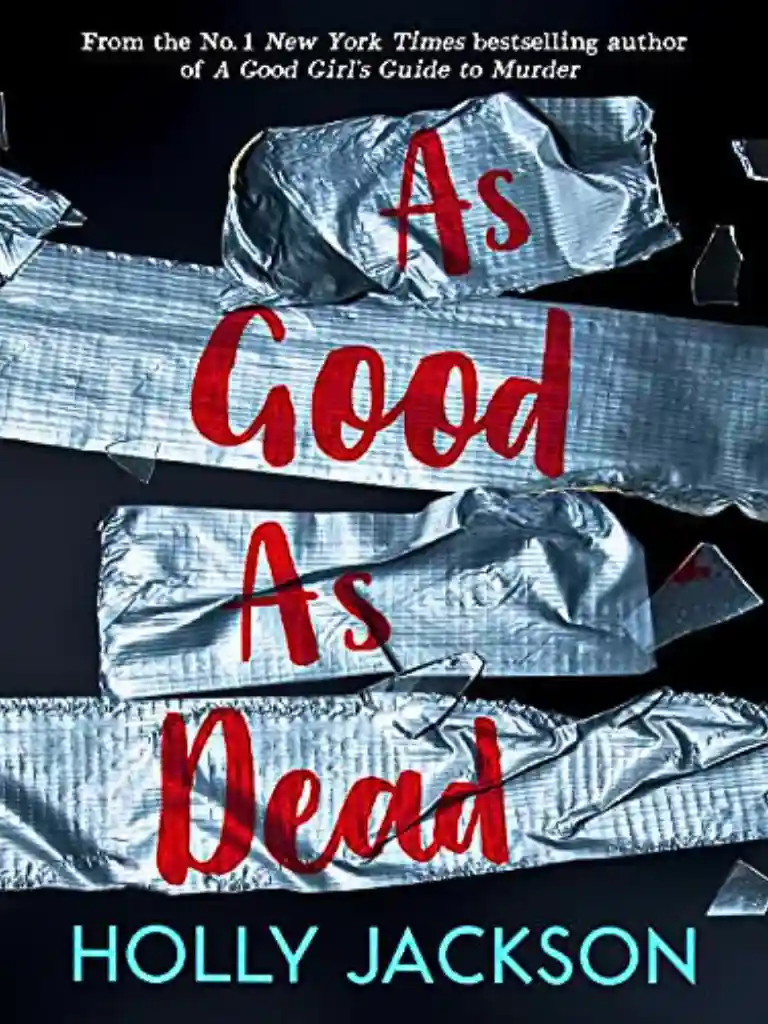No one should brave the underworld alone.
-Poe
[-> “The walls are endlessly bare. Nothing hangs on them, nothing defines them. They are without texture. Even to the keenest eye or most sentient fingertip, they remain unreadable. You will never find a mark there.
No trace survives. The walls obliterate everything. They are permanently absolved of all record. Oblique, forever obscure and unwritten. Behold the perfect pantheon of absence.” – [Illegible] – Ed.]
On the first day of April, Navidson set out on the last exploration of those strange hallways and rooms. The card introduces this sequence as nothing more than Exploration #5.
For recording the adventure, Navidson brought with him a 1962 H16 hand crank Bolex 16mm camera along with 16mm, 25mm, 75mm KernPaillard lenses and a Bogen tripod. He also carried a Sony microcassette recorder, Panasonic Hi 8, ample batteries, at least a dozen 120 minute Metal
Evaporated (DLC) tapes, as well as a 35mm Nikon, flashes, and a USA
Bobby Lee camera strap. For film, he packed 3000 feet of 7298 16mm Kodak in one hundred foot loads, 20 rolls of 35mm, including some 36 frame Konica 3200 speed, plus 10 rolls of assorted black and white film. Unfortunately the thermal video camera he had arranged to rent fell through in the last minute.
For survival gear, Navidson took with him a rated sleeping bag, a one man tent, rations for two weeks, 2 five-gallon containers of water, chemical heat packs, flares, high intensity as well as regular intensity lightsticks, plenty of neon markers, fishing line, three flashlights, one small pumper light, extra batteries, a carbide lamp, matches, toothbrush, stove, change of clothes, an extra sweater, extra socks, toilet paper, a small medical kit, and one book. All of which he carefully loaded into a two wheel trailer which he secured to an aluminum-frame mountain bike.
For light, he mounted a lamp on the bike’s handlebars powered by a rechargeable battery connected to a small optional rear-wheel generator. He also installed an odometer.
As we can see, when Navidson first starts down the hallway he does not head for the Spiral Staircase. This time he chooses to explore the corridors.
Due to the weight of the trailer, he moves very slowly, but as we hear him note on his microcassette recorder: “I’m in no hurry.”
Frequently, he stops to take stills and shoot a little film.
After two hours he has only managed to go seven miles. He stops for a sip of water, puts up a neon
marker, and then after checking his watch begins pedaling again. Little does he understand the significance
of his offhand remark: “It seems to be getting easier.”
Soon, however, he realizes there is a definite decrease in resistance. After an hour, he no longer
needs to pedal: “This hallway seems to be on a decline. In fact all I do now is brake.” When he finally stops for the night, the odometer reads an incredible 163 miles.
As he sets up camp in a small room, Navidson already knows his trip is over: “After going downhill for eight hours at nearly 20 mph, it will probably take me six to seven days, maybe more, to get back to where I started from.”
When Navidson wakes up the next morning, he eats a quick breakfast, points the bike
home, and begins what he expects will be an appalling, perhaps impossible, effort.
However within a few minutes, he finds he no longer needs to pedal.
Once again he is heading downhill.
Assuming he has become disoriented,
he turns around and begins pedaling in the opposite direction, which should be uphill. But within fifteen seconds, he is again coasting down a slope.
Confused, he pulls into a large room and tries to gather his thoughts: “It’s as if I’m moving along a surface that always tilts
downward no matter which direction I face.”
Resigned to his fate, Navidson climbs back on the bike and soon enough finds himself clipping along at almost
thirty miles an hour.
For the next five days Navidson
covers anywhere from 240 to 300 miles at a time, though on the
fifth day, in what amounts to an
absurd fourteen hour marathon,
Navidson logs 428 miles.
Nor does this endless corridor he travels remain the same size.
Sometimes the ceiling drops in on him,
getting
progressively
lower
and
lower
until it begins to graze his head,
only to shift a few minutes later,
rising higher and higher until
it disappears altogether.
Sometimes the hallway widens, until at one point Navidson
wears he is moving down some enormous plateau:
“An infinitely large billiard table or the smooth face of some incredible mountain,” he tells us hours later while preparing a modest meal. “One time I stopped and set out to the right on what I thought would be a traverse.
Within seconds I was heading downhill again.”
And then the walls reappear, along with the ceiling and numerous doorways; the shifts always accompanied by that inimitable, and by now very familiar, growl.
As the days pass, Navidson becomes more and more aware that he is running precariously low on
water and food. Even worse, the sense of inevitable doom this causes him is compounded by the sense of immediate doom he feels whenever he begins
riding his bike: “1 can’t help thinking I’m going to
reach an edge to this thing. I’ll be going too fast to stop and just fly off into darkness.”
Which is almost what happens.
On the twelfth or thirteenth day (it is very difficult to tell which), after sleeping for what Navidson estimates must have been well over 18 hours, he again sets off down the hallway.
Soon the walls and doorways recede and
v a n i s h,
then the ceilings lifts completely out of sight
until it too is completely out of sight
“direction no longer matters.”
Navidson stops and lights four magnesium flares which he throws as far as
he can to the right and left.
Then he bikes down a hundred yards and lights four more flares. After the third time, he turns around and
relying on a timed exposure photographs the twelve flares.
The first image captures twelve holes of light.
In the second image, however, the flares seem much farther away. By the third image, they appear only as streaks, indicating that either
Navidson or
the
flares
are
m o v i n g
.
However,
Navidson’s comments on the microcassette recorder indicate his camera was firmly fixed on the tripod.
Having little choice, Navidson continues on. The hours sweep by. He tries to drink as little water as possible. The odometer breaks. Navidson does not care. It no longer seems relevant to him how many thousands of miles he has traveled. He just continues to ride, lost in a trance born out of motion and darkness, the lamp on his bike never casting light more than a few yards ahead, barely describing the ash floor in front of him before it is already behind him, until all of a sudden, although nothing appears to have changed, one moment differs from the rest, warning Navidson to stop. “As if all along, during the last week, I had sensed something out there” Navidson stutters into the Hi 8 an hour later. “And then all at once it was gone, replaced by – [Navidson is not the only one to have intuitively sensed the abyss. During the tragic May assault on Everest where eleven people died, Neal Biedelman, lost at night in a blinding blizzard, described how he stumbled to the edge of the 7,000 foot Kangshung face: “Finally, probably around ten o’clock, I walked over this little rise, and it felt like I was standing on the edge of the earth. I could sense a huge void just beyond.” See Jon Krakauer’s “Into Thin Air” in Outside, v. xxi, n. 9, September 1996, p. 64.]
Navidson tries to stop, hammering down on the brakes, rubber pads failing to hold the wheels, shrieking, even though he is still seconds before the pale light thrown by the bike lamp will finally catch sight of the end. “At that point I just yanked my bike to the ground,” he says, pointing the video camera at his left thigh. “My leg’s pretty torn up. Still bleeding a little. The trailer’s completely wrecked. I think that’s what finally stopped me. I slid right to the edge. My legs were hanging over. And I could feel it too. I don’t know how. There was no wind, no sound, no change of temperature. There was just this terrible emptiness reaching up for me.”
Flush with the brink stands a structure reminiscent of a bartizan. It is no more than seven feet high and has only one door. Inside Navidson discovers a winding staircase, which instead of leading up somewhere, or down somewhere, lies on its side, penetrating through the wall facing the abyss. Still badly shaken, Navidson does not investigate. Instead, he decides to spend the night, or whatever time of day it is-for some reason the time stamp on the Hi 8 is no longer functioning-within the confines of that unanticipated shelter. [While it would have offered Navidson some comfort, these walls still find Hermann Broch’s inscription insupportable: In der Mitte aller Ferne steht dies Haus drum hab es gern. “In the middle of all distance stands this house, therefore be fond of it.” -Ed.]
The first thing Navidson notices when he wakes up is that the only door out of there has vanished. Furthermore the stairs which were horizontal before he had gone to sleep are now directly above him, rising through the ceiling, suggesting that the tiny house within a house has rotated onto its side. After changing the bandages on his leg and devouring a small snack, Navidson transfers the sleeping bag, tent, Bolex, the Nikon, the Hi 8, the film, all the video tapes, the microcassette recorder, two containers of water, three flares, chemical heaters, and the remaining PowerBars into his pack, which he then tosses up through the hole……
…… in the ceiling where it lodges on on a step. Other items,
like flashlights, batteries and this journey’s
only book, Navidson stuffs into his
pockets. Cautiously he then climbs onto
the handlebars of the bike, grabs hold of the first stair and pulls himself up
through the only
exit out of that cramped room
.
No sooner does he start up this new staircase than the floor below him vanishes along with the bike, trailer, and everything else he left behind, including additional water, food, flares, and lenses. Navidson sprints upwards, trying to distance himself as quickly as possible from that gaping pit. Unfortunately the winding stairs offer no landings or exits. After who knows how many hours, he reaches the last step, finding himself in a small circular chamber without doorways or passages. Just a series of black rungs jutting out of the wall, leading up to an even narrower vertical shaft.
Slowly but surely,
hand over hand,
Navidson
pulls himself up
the ladder. But
after presumably
hours and hours
of climbing,
with only brief
stops to take a
gulp of water or
have a bite of some high-caloric energy
bar, Navidson
admits he will
probably have to
tie himself to a
rung and try to
sleep. This idea,
however, is so
unappealing he
continues to push on
for a little longer. His
tenacity is rewarded.
Thirty minutes later
he reaches the last
rung. A few more
seconds and he is standing inside a very
[Erich Kastner in Olberge Weinberg (Frankfurt, 1960, p. 95) comments on the force of vertical meanings:
The climbing of a mountain reflects
redemption. That is
due to the force of
the word ‘above,’
and the power of
the word ‘up.’ Even
those who have
long ceased to
believe in Heaven
and Hell, cannot
exchange the words
‘above’ and ‘below.’
And idea Escher beautiful subverts in House of Stairs, disenchanting his audience of the gravity of the world, while at the same time enchanting them with the peculiar gravity of the self.]
small room with
one door which
he cautiously opens.
On the other side, we find a narrow cor ridor sliding into darknes s. “These w
alls are actua lly a relief,”
Navidson co
mments after he has been
walking for a while. “I ne
ver thought t his labyrinth would be a p leasant thin
g to return to.” Excep t the futhe r he goes t
he smaller t he hallway
gets, unti l he has t o remove his pack and crou
ch. So
on he i
s on all fours p
ushing
his pac
k in fro nt of hi
m. Another
hundred yar ds and he h
as to crawl on hi s belly. As we c
an see, the pain f rom his already i
njured leg is excru ciating. At one poi
nt, he is unable t o move another i
nch. The jump cut suggests he may h
ave rested or slept
. When he begins
dragging himself forw ard again, the pain has
still not diminished. E ventually though, he e
merges inside a v ery large room w
here everything about
the house
suddenly
changes.
[XXXXXXXXXXXXXXXXXXXXXX]
[XXXXXXXXXXXXXXXXXXXXXX]
[XXXXXXXXXXXXXXXXXXXXXX]
[XXXXXXXXXXXXXXXXXXXXXX]
[XXXXXXXXXXXXXXXXXXXXXX]
[XXXXXXX XXXXX XXXXXXX]
[XXXXXXX XXXXX XXXXXXX]
[XXXXXXX XXXXX XXXXXXX]
[XXXXXXX XXXXX XXXXXXX]
[XXXXXXX XXXXX XXXXXXX]
[XXXXXXXXXXXXXXXXXXXXXX]
[XXXXXXXXXXXXXXXXXXXXXX]
[XXXXXXXXXXXXXXXXXXXXXX]
[XXXXXXXXXXXXXXXXXXXXXX]
[XXXXXXXXXXXXXXXXXXXXXX]
“I’m afraid it’ll vanish if I move closer. It’s almost worth spending an hour just basking in the sight. I must be nuts to enjoy this so much.”
But when Navidson finally does move forward, nothing changes.
[ ]
[ ]
[ ]
[ ]
[ ]
[ XXXXX ]
[ XXXXX ]
[ XXXXX ]
[ XXXXX ]
[ XXXXX ]
[ ]
[ ]
[ ]
[ ]
[ ]
With each step Navidson takes, we too grow more and more convinced that we are really looking at a window and furthermore and open window.
Doorways offer passage but windows offer vision. Here at last is a chance to behold something beyond the interminable pattern of wall, room, and door; a chance to reach a place of perspective and perhaps make some sense of the whole. And eye on the wind. Though as Navidson discovers, there was never a wind and there certainly is no eye.
Climbing out onto a narrow terrace on the other side, Navidson, for the second time during Exploration #5, confront that grotesque vision of absence. This time, however, he can do little else but laugh.
“Well isn’t this unexpected,” Navidson chuckles. But as he turns to go back, he finds the window has vanished along with the room. All that remains is the ashblack slab upon which he is standing, now apparently supported by nothing: darkness below, above, and of course darkness beyond.
It is only a matter of time before all of Navidson’s flashlights expire. Regrettably the hand powered pumper flashlight was lost with the bike and trailer. As for the three flares Navidson had been carrying with him, he soon uses them when he finds himself powerless to resist the promise of at least a little warmth and retinal activity. Who knows how many hours or days pass between each flare. Navidson’s watch stopped functioning long ago. But as he freely admits, he no longer cares about the meaning of a minute or even a week.
Since the batteries for the Hi 8 are also depleted, Navidson now has only his microcassette recorder to collect his thoughts and the 16mm Bolex to capture the sputtering bits of light. The first flare drops straight down, illuminating nothing but itself, never reaching a bottom, ultimately winking out in the darkness. The second flare, however, does not fall but floats instead: “at first it amazed me and then I got used to it. For a while, I treated it like a lamp, reading a few pages of the book I’d brought along.” The third flare flies straight up and vanished into the black above.
Though terribly short, these three segments reveal Navidson’s ability to find in even the barest moment a way to evoke tenderness. His frames care for their subject. Even when the three flares finally vanish Navidson still lets the camera roll, lingering on their departure, the ensuing darkness coming close to meaning the loss felt so often in the aftermath of light.
As Navidson indicates on the recorder, he is slowly becoming more and more disoriented. He suffers from surges of nausea, “like I’ve got a bad case of the spins.” Questions plague him. Is he floating, falling, or rising? Is he right side up, upside down or on his side? Eventually, however, the spins stop and Navidson accepts that the questions are sadly irrelevant.
Taking a tiny sip of water and burying himself deeper in his sleeping bag, he turns his attention to the last possible activity, the only book in his possession: House of Leaves.
“But all I have for light is one book of matches and the duration of each ma-” (for whatever reason the tape cuts off here).
Hans Staker from Geneva, Switzerland has researched the Navidsonmatch question. By carefully analyzing one black & white print which briefly appears after the flare vignettes, Staker managed to magnify the matchbook just visible in the lower left hand corner. Navidson’s thumb obscures most of the design but the Latin words Fuji Ilium can still be made out along with the English words Thanks To These Puppies.
Based on this scant evidence, Staker successfully determined that the matches came from of all places a pub outside of Oxford, England, run by a former classics professor and amateur phillumenist by the name of Eagley “Egg” Learned who, as it turned out, had designed the matchbook himself.
“Most British septuagenarians have their gardens to putter about in. I have my pub,” Learned told Staker in an interview. “I tinker constantly with my ale selection the way the incontinent fret about their tulips. The matches came out of that sort of tinkering. There’s actually a factory not too far from here. I merely applied twenty years of Latin to come up with the cover. Call it an old man’s hat tip to anarchy. A touch more incendiary than the old Swan Vestas, I think. Designed to keep the goraks away.” [L-See Hans
Staker’s “Thanks To These Puppies” in Collected Essays on “Exploration #5 (Liverpool: Batel Press, 1996) p. 89-142.]
Staker goes on to trace how the matchbook got from Learned’s pub to Navidson’s steady hands. Learned actually stopped ordering the matches back in ’85 which was right after Navidson visited England and presumably the pub.
It is highly unlikely Navidson ever intended to use a book of ten year old matches on a journey as important as this one. In fact, he packed several boxes of recently purchased matches which he lost along with the trailer and bike. Probably some private history caused him to carry the matchbook on him.
To Learned’s credit, they are good matches. The heads ignite easily and the staffs burn evenly. Staker located one of these matchbooks and after recreating the conditions in the house (namely the temperature) found that each match burned an average of 12.1 seconds. With only 24 matches plus the matchbook cover, which Staker figured out would burn for 36 seconds, Navidson had a total of five minutes and forty-four seconds of light.
The book, however, is 736 pages long. Even if Navidson can average a page a minute, he will still come up 704 pages short (he had already read 26 pages). To overcome this obstacle, he tears out the first page, which of course consists of two pages of text, and rolls it into a tight stick, thus creating a torch which, according to Staker, will burn for about two minutes and provide him with just enough time to read the next two pages.
Unfortunately Staker’s calculations are really more a form of academic onanism, a jerk of numeric wishful thinking, having very little to do with the real world. As Navidson reports, he soon begins falling behind. Perhaps his reading slows or the paper burns unevenly or he has bungled the lighting of the next page. Or maybe the words in the book have been arranged in such a way as to make them practically impossible to read. Whatever the reason, Navidson is forced to light the cover of the book as well as the spine. He tries to read faster, inevitably loses some of the text, frequently burns his fingers.
In the end Navidson is left with one page and one match. For a long time he waits in darkness and cold, postponing this final bit of illumination.
At last though, he grips the match by the neck and after locating the friction strip sparks to life a final ball of light.
First, he reads a few lines by match light and then as the heat bites his fingertips he applies the flame to the page. Here then is one end: a final act of reading, a final act of consumption. And as the fire rapidly devours the paper, Navidson’s eyes frantically sweep down over the text, keeping just ahead of the necessary immolation, until as he reaches the last few words, flames lick around his hands, ash peels off into the surrounding emptiness, and then as the fire retreats, dimming, its light suddenly spent, the book is gone leaving nothing behind but invisible traces already dismantled in the dark.
“I have nothing left,” Navidson says slowly into the microcassette recorder. “No more food. No more water. [Long pause] I have film but the flash is dead. I’m so cold. My feet hurt.” Then (who knows how much later):
“I’m no longer sitting on anything. The slab, whatever it was, is gone. I’m floating or falling or I don’t know what.” [Perhaps it is worthwhile to mention here the response to what serves essentially as the climax to Navidson’s documentary. After all, the film does not provide an even remotely coherent synthesis of Navidson’s fall. There is a still photograph of the window, a few hundred feet of flares dropping, hovering, shooting up into the void, and several pictures of Navidson reading! burning the book. The rest is a jumble of audio clips recording Navidson’s impressions as he begins to die from exposure. All of which comes down to one incredible fact: nearly six minutes of screen time is black.
In Rolling Stone (November 14, 1996, p. 124) columnist James Parshall remarked:
Horrific, true, but also amusing. Even to this day, I can’t help smiling when I think about the audience squirming in their seats, squinting at that implacable screen, now and then glancing over at those luminous red exit signs in order to give their eyes a rest, while somewhere behind them a projector continues to spew out darkness.
Michael Medved was appalled. In his mind, six minutes of nothing spelled the end of cinema. He was so shocked, indignant, even incoherent, he failed to consider that The Navidson Record might have absolutely nothing to do with cinema. Stuart Deweltrop in Blind Spot (v.42, spring, 1995, p. 38) described it as “a wonderful fiasco-n’est-ce pas?” Kenneth Turan called it “a stunt.” Janet Maslin, however, had a completely different reaction: “At last a picture with cojones!”
Nor did Navidson’s ending escape the gang in the monkey house. Jay Leno quipped, “You know how they made The Navidson Record? Left the lens cap on. This really a home movie.” While Letterman scowled: “Think about it folks: no stars, no crew, no locations. Very inexpensive. A lot of studios are taking this idea very seriously… Seriously.” Whereupon the lights on the stage were turned off for several seconds. On Home Improvement, Tim Allen offered a one minute parody in the dark, mostly having to do with stubbed toes, broken dishware, and misdirected gropes.
Meanwhile, a number of serious film aficionados began commenting on the quality of the audio. It is no great secret now that Tom Holman, California THX sound wizard, helped clean up the tapes and monitor all the transfers. Numerous articles appeared in Audio, Film, and FIX. Purportedly Vittorio Storaro even said: “With sound that bright who needs light?” It is hard to disagree. Even if some of Navidson’s words are impossible to understand, there is still a haunting proximity when he speaks, as if he were no longer buried in black, his words tapering without echo, his dying almost too close to bear.
Now, expect for when Navidson speak, silence predominates.
Not even the growl dares disturb his place.
“I have no sense of anything other than myself,” he mumbles.
“I know I’m falling and will soon slam into the bottom. I feel it, rushing up at me.” But he can only live with this fear for so long before he recognizes: “I won’t even know when I finally do hit. I’ll be dead before I can realize anything’s happened. So there is no bottom. It does not exist for me. Only my end exists.” And then in a whisper: “Maybe that is the something here. The only thing here. My end.”
Navidson records his sobs and groans. He even captures moments of faint amusement when he jokingly announces: “It’s not fair in a way. I’ve been falling down so long it feels like floating up to me-” Soon though he grows less concerned about where he is and becomes more consumed by who he once was.
Unlike Floyd Collins, Navidson does not rave about angels in chariots or chicken sandwiches. Nor does he offer us his C.V. like Holloway. Instead, as urea pours into his veins and delirium sets in, Navidson begins rambling on about people he has known and loved: Tom- “Tom, is this where you went? Don’t look down, eh?” -Delial, his children and more and more frequently Karen- “I’ve you. I’ve lost you.”
Sometimes his words are intelligible. Sometimes they are nt. “Catch me
I’m falling, I’m flying” or “Now I will walk-sleep.” However unlike The Holloway Tape, this footage is devoid of any subtitles or subinterpretations.
A little later, Navidson becomes almost light hearted, for a moment losing sight of the question of his own end, his own past, derailed by some tune now edged in his head, drifting up from out of the blue, one he can remember but cannot quite name: “Something like… I think, hmmm… Kinda like… [Coughs] [Coughs again] Now I find I changed my mind and opened up the door…”
“Daisy. Daisy. Daisy. Daisy. Daisy, give me your answer do. I’m half crazy over the love of you. That’s not right.”
“Don’t be scared.”
“Don’t be.”
“I am.”
Finally Navidson’s words, tunes, and shivering murmurs trail off into a painful rasp. He knows his voice will never heat this world. Perhaps no voice will. Memoires cease to surface. Sorrow threatens to no longer matter.
Navidson is forgetting.
Navidson is dying.
Very soon he
will vanish
.
completely in the wings
.
of his own wordless
stanza
[ ]
[ ]
[ ]
[ ]
[ ]
[ ]
[ ]
[ ]
[ ]
[ ]
[ ]
[ ]
[ ]
Except
this stanza
.
does not remain
.
entirely empty
[ ]
[ * ]
[ ]
[ ]
[ ]
[ ]
[ ]
[ ]
[ ]
[ ]
[ ]
[ ]
[ ]
“Light,” Navidson croaks. “Can’t. Be. I see light. [Ignis fatuus? | “Foollsh Fire. Will of the wisp [1608].” – Ed.] Care-“
Sure enough the final frames of Navidson’s film capture in the upper right- hand corner a tiny fleck of blue crying light into the void. Enough to see but not enough to see by.
The film runs out.
Black.
A different kind of black,
Followed by the name of the processing lab.*








